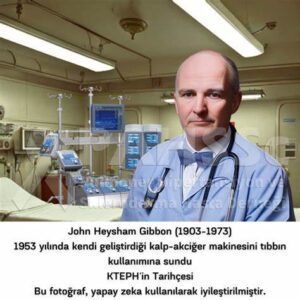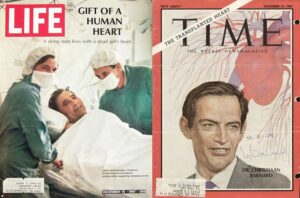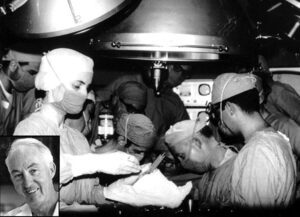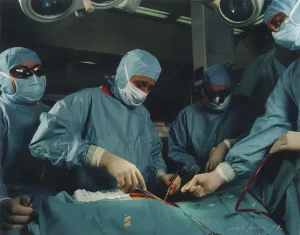Cardiovascular surgery is a relatively young medical field compared to other surgical branches. When examining the history of cardiovascular surgery, it’s evident that developments in this field were made possible by overcoming many challenges.
The First Steps in Cardiovascular Surgery
While surgical techniques advanced rapidly in the 19th century, cardiovascular surgery remained in the background. The main reason for this was the perception of the heart as a sacred and untouchable organ. The first major development in the history of cardiac surgery occurred in 1896, when German surgeon Ludwig Rehn successfully repaired a penetrating knife wound to the heart.
Heart-Lung Machine and Open-Heart Surgeries

At the beginning of the 20th century, it became clear that in order to repair defects within the heart, the heart had to be stopped and circulation maintained through a machine. For this purpose, in 1938, American surgeon John H. Gibbon developed the first prototype of the heart-lung machine. However, these efforts slowed down due to World War II.
In 1952, Dr. F. John Lewis repaired an atrial septal defect using a heart-lung machine, performing the first successful open-heart surgery in history. In 1953, Dr. John W. Kirklin and his team pioneered in the history of cardiovascular surgery by performing a series of open-heart surgeries.
Coronary Bypass and Heart Transplant
In the 1960s, Dr. Sones developed the coronary artery angiography method, followed by Dr. René Favaloro performing the first coronary bypass surgery in 1967. In the same year, Dr. Christiaan Barnard performed the world’s first successful heart transplant.
Minimally Invasive and Robotic Surgery Era
In the 1980s, blocked arteries began to be opened without the need for surgical intervention using the angioplasty method. From the late 1990s onwards, with the advancement of technology, minimally invasive cardiovascular surgery techniques became widespread. Thanks to these techniques, patients are operated on with smaller incisions and recovery processes are accelerated.
Today, robotic heart surgery allows for operations with precise movements and minimal incisions. These developments are the result of progress made throughout the history of cardiovascular surgery.
Frequently Asked Questions
When did cardiovascular surgery begin?
The foundations of cardiovascular surgery were laid at the end of the 19th century. In 1896, German surgeon Ludwig Rehn performed the first surgical intervention in this field by successfully repairing a knife wound to the heart.
When was the first open-heart surgery performed in the world?
The first successful open-heart surgery was performed in 1952 by Dr. F. John Lewis. A heart-lung machine was used during this surgery.
When did coronary bypass surgery start to be performed?
Coronary bypass surgery was successfully performed by Dr. René Favaloro in 1967.
What is minimally invasive heart surgery?
Minimally invasive heart surgery is a surgical method performed using smaller incisions. This technique allows patients to recover faster.
How is robotic heart surgery performed?
Robotic heart surgery is an advanced technological method where the surgeon controls robotic arms from a console. It allows for surgery to be performed with smaller incisions and more precision.




